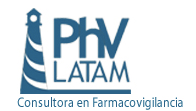An emerging economy
Mexico: a developing market – some indicators
With an expected GDP growth of 3.5% for 2013, Mexico establishes itself as one of the most interesting and fastest-growing economies in the world. It’s GDP situates it within the 15 top markets in the world, and 2nd in Latin America.
The Mexican balance of payments, an accounting record of all monetary transactions between a country and the rest of the world, and indicator of a country’s position in the global economy, is of -1.5%, a much better figure than most developed countries.
Mexico’s fiscal deficit, the difference between public expenditure and income, is only of 2.2% relative to the GDP. (Note: 2.2% if we don’t consider the effect of Pemex, the state’s oil company. with Pemex: 3.0) The fiscal deficit is an indicator of a government’s budget and dependance on credit. For definition, the lower the better. To have an idea of how Mexico is doing, Japan, consider that the US and the UK have fiscal deficits of 10.1, 9.5 and 8.6, respectively.
The amount of direct foreign investment in Mexico year to year has been strong and consistent for the last two decades, staying at reasonable levels even after the 2008 financial crisis.
Health and HealthCare in Mexico
As many other developing countries, Mexico is currently experiencing what is known as the epidemiological transition, in which infectious diseases are decreasing as main cause of death, and non-communicable, degenerative and chronicle diseases are gaining terrain. This happens at the same time that the demographic transition takes place. The demographic transition is the process of ageing of the population which mechanics can be summarized in two factors: women are having less children, and women are starting having children later, due to increase in education, quality of life, awareness and empowerment.
Approximately two thirds of the Mexican population is covered under the social security scheme. The government’s aim is to reach a 100%, guaranteeing universal healthcare in the country. A positive sign showing signs of success in this quest is the fact that public expenditure in drug products has been increasing consistently since 2005, while out-of-pocket health expenditure has been going down, showing a transfer prom private to public resource of public health means.
As expenditure in pharmaceuticals as a percentage of the total health expenditure, Mexico is second at the top of the Organization for Economic Cooperation and Development countries, only surpassed by Hungary.
The Mexican pharmaceutical market is worth approximately 13 billion dollars (estimate 2012) what makes it one of the top 20 biggest pharma markets in the world, and the 2nd in Latin America, only after Brazil. An 80% of the value (and 20% of the volume) of this market corresponds to the private sector, while the other 20% (80% of the volume) comes from the public sector, mainly in the form of tender businesses for generic drugs.
The pharmaceutical domestic industry represents 1.2% of the GDP and almost 7% of the manufacturing GDP, creating 78,500 direct jobs and affecting 330,000 positions of indirect employment. This industry is mainly for internal consumption; only 14% of the pharmaceutical goods produced are for export.
Some interesting characteristics of the Mexican culture that influence the pharmaceutical market are a strong brand loyalty from both doctors and patients, and the presence of a black market offering low-cost medicines which compete with the legal drug products.
Last update: October 2013
Map of this section of the site





thanx a lot …..for this information
you are like god to me..
Excellent info…Thanq…